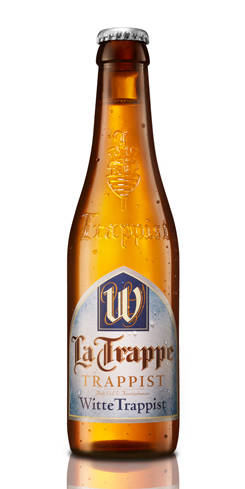Witte Trappist is being evaluated as a Witbier (2015 BJCP Category 24A) according to BJCP guidelines.
Bread dough fills the head space of the glass and dominates the aroma. The yeast profile is seemingly complex: peppercorn, clove, and a subdued tartness are evident in the aroma. No orange peel, coriander, or chamomile notes are detected. A pleasant light hop aroma helps brighten things up with notes of peach skin and apricot.
This is a beautiful-looking beer. A hugely dense, creamy white head floats atop for the duration of enjoyment. The beer is a straw-yellow with a slight haze, making the purity of the white head stand out even more.
The beer is low in bitterness with a mild citrus hop flavor and a breadth of cracker-like malt flavor. Like the aroma, there is an absence of coriander and/or orange peel. The beer finishes semi-dry with a lingering wheat/hay flavor. This beer has a medium-light body, moderately high carbonation and an element of creaminess, which makes it incredibly drinkable.
While this witbier isn’t the most characteristic of its style with a lack of coriander, orange and other spices that may pop up in the best examples, it is incredibly refreshing and has a good bit of complexity to it. A great choice for a warm-weather day when you’re craving something light but flavorful.




